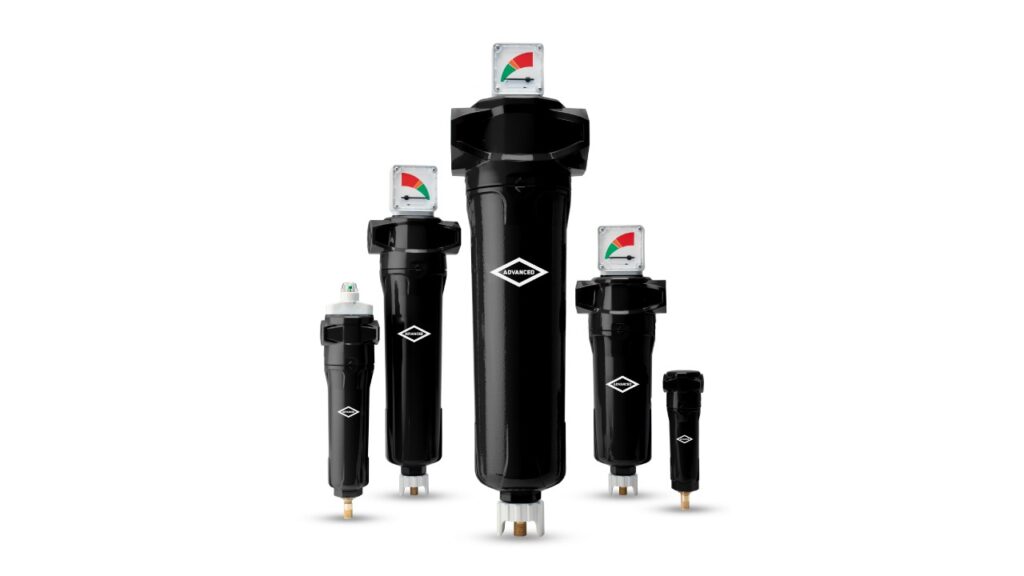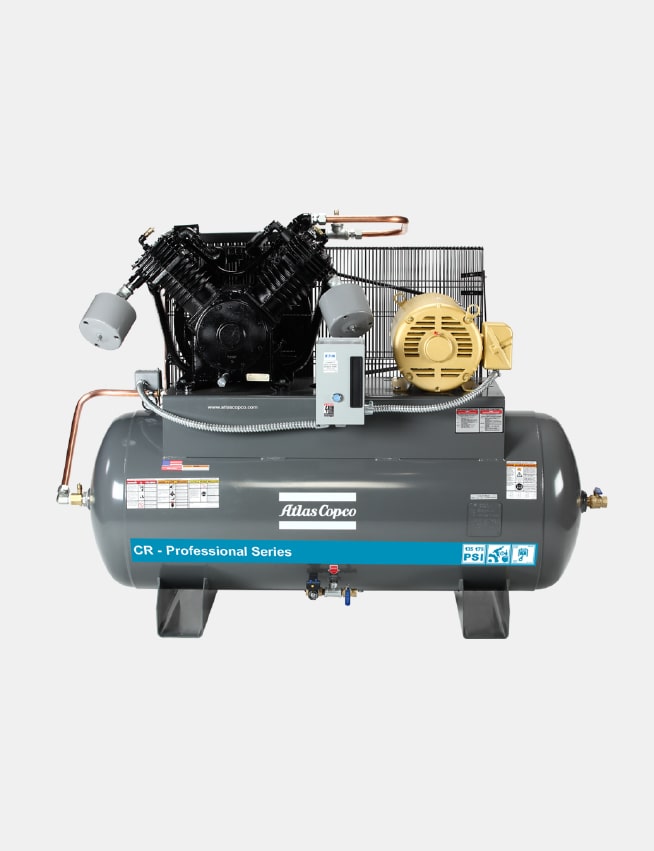Uh oh, there’s water dripping out of your industrial air compressor lines or your pneumatic tools. How did it get there? Is it bad for your system? How can you get existing water out of your air compressor, lines and tools, and how can you prevent water from getting into your air compressor in the future? At Advanced Air, water in air compressor lines is a common problem that we see and help business owners fix. Keep reading to discover how to avoid this potentially harmful situation from developing in your air compressor lines and how to treat it if it does occur.
How did water get in my air compressor in the first place?

Most water that shows up in industrial air compressor systems is because it’s pulled in from the environmental air that is compressed in your equipment. Even in semi-arid environments, the air still contains some humidity. Because your air compressor equipment packs a lot of air into your tank or system, that moisture builds up. But how can you get so much water into your air compressor system? Let’s go through a quick thought exercise to get an idea of how much water can get into your air compressor under normal operating conditions.
Using this handy calculator at Quadco Engineering, you can calculate how much moisture is in the air. We know that at our El Cajon, California location, which is considered semi-arid, our average annual humidity is 71%, and the average annual temperature is 17.78ºC. The calculator determined that for every cubic foot of air that is pumped into your air compressor, you’ll get 0.00878 cubic feet of water, or 0.878%, in your tank as well. To put it into easier terms, if you consider that every cubic foot has 1,728 inches, that means that you’ll get a little over 15 cubic inches of water into your compressor.
That’s at standard pressure for El Cajon, which is around 1015 millibar, or a little under 15 PSI. But the air in your storage tank is significantly higher than 15 PSI. Let’s say you keep it at a relatively moderate 90 PSI. That means for every cubic foot of capacity in your tank, you’re storing six times that 15 cubic inches, or about 90 cubic inches of water. If you’ve got a 50-gallon tank, that’s a touch over 7 square feet, so you’ll have 630 cubic inches of water added to your tank every time you cycle it, taking up about a gallon of capacity every three cycles.
That’s a lot! And if you use higher pressures, the number increases even more. Though some portion of it will go out through your tools as you work as part of the compressed air, a lot of it condenses in the tank, especially as decompression of the air in the tank makes it cool down. The next question you have is whether this really is a problem (it is) and what you can do about it to protect your investment (a lot).
Is water in my air compressor bad?

Like having water anywhere, water in your air compressor can cause a lot of problems. This can shorten the lifespan of your tools, compressor, lines and equipment, depending on how you have it set up. You don’t want to have to replace your tools and equipment, and you don’t want to end up with an expensive and harmful accident. So, let’s look at the issues that can be caused by water in your air compressor.
To start, water causes corrosion. In iron or ferrous metals, this shows up as rust, but it can also impact copper and brass tools as well, showing up as that turquoise-toned crud on pipes. In either form, as copper oxide or iron oxide, it can cause a lot of problems. It can bind up your tools and prevent them from having the full range of motion that they need to be able to perform their job properly.
But corrosion also causes other issues that are harder to see in your tank, metal lines and metal fittings. As that water sits in your system, day after day, week after week, month after month, it not only builds up water that will reduce your capacity, but it also erodes small amounts of the metal while creating weak spots in your system. These weak spots get worse over time, and can eventually create a serious situation, as the pressure that builds up in your air compressor system can eventually lead to a blowout at the weak point, sending rusty metallic shrapnel flying across your facility.
Suddenly that little bit of water in your air compressor is a much bigger issue. Though adding oil to your tools daily can provide some protection at that end, it won’t protect your lines, tanks and fittings. This can cause serious problems for your company, problems that should be addressed ASAP.
How to get water out of your air compressor

So now we know that water in your air compressor is bad, but you’ve already seen a few drips coming out of your lines. What do you do next? The best place to start is by draining your tank. Find the valve located on the body of the tank and rotate that part of your tank to the bottom position if it’s not already there. Depressurize your tank, then open the valve and allow the water to drain out. Make sure to check the water that is draining – if it’s got a lot of rust in it, or even small flakes of metal, you may want to consider replacing the tank or having it pressure tested to ensure that it will continue to operate safely.
Once the tank is empty, close the valve. Yes, it makes perfect sense, but you’d be surprised how often it’s missed. If you’re wondering whether you should just leave it open to prevent more water from building up before the next use, consider that insects and dirt can then get into your tank, adding contamination to your line and wear to your tools. You can also drain it again before you use it next, which provide you with a little extra security. If you’ve got a larger tank or one that has the drain in an awkward position, you could consider adding a drain extension or automate using an automatic tank drain system. This type of system automatically opens the drain on a particular cycle, such as every time it’s turned off or even after every discharge of air from the system.
If you’re concerned about air in your lines getting into your tools, you can add an inline air filter to begin removing that fluid, while you take the steps listed below to reduce how much moisture enters your system in the first place. To do this, you’ll simply need to add an inline air filter into the fittings directly before the tool, which will allow it to remove the excess moisture and finish cleaning out your air compressor system over time.
How to prevent water from getting into your air compressor

Now that you’ve drained your air compressor system, how do you reduce or eliminate the amount of water that can get into your air compressor in the first place? There are a few options available to help you reduce or eliminate water in your air compressor, depending on how advanced you need to go to protect your system.
The first is an air filter. A simple device, it can be placed on your air intake to remove any debris over a particular size while also removing some amount of moisture from the air. This makes it easy to use, because it only requires regular changing, but this also limits its effectiveness, especially in an industrial situation or damp environment where it won’t keep up with demand. There’s also the ongoing cost of replacing the air filter media, which will stretch on indefinitely into the future.
The better option to consider for industrial equipment is incorporating refrigerated air dryers into your overall system. These devices use electricity to cool the air as much as possible. Because cool air cannot hold as much moisture as warm air, the moisture condenses out of the air and is drained away, while the cold air is cycled into your industrial air compressor system. Refrigerated air dryers remove much more moisture from the air because of their active process, which delivers much better results than a simple air filter. The cost to purchase and operate refrigerated air dryers tend to be higher than air filters, but they deliver significantly better results for the investment.
By understanding how water gets into your air compressor system and how to fix the problem, you can ensure that you’re getting the best possible performance from your system by taking care of it. If you’re concerned about water in your air compressor system and need help fixing the problem, the experienced professionals at Advanced Air are here to help. Please feel free to contact us today with any questions, to get advice on what will help your air compressor system operate better or to request a quote on some of our wide selection of products and services.

